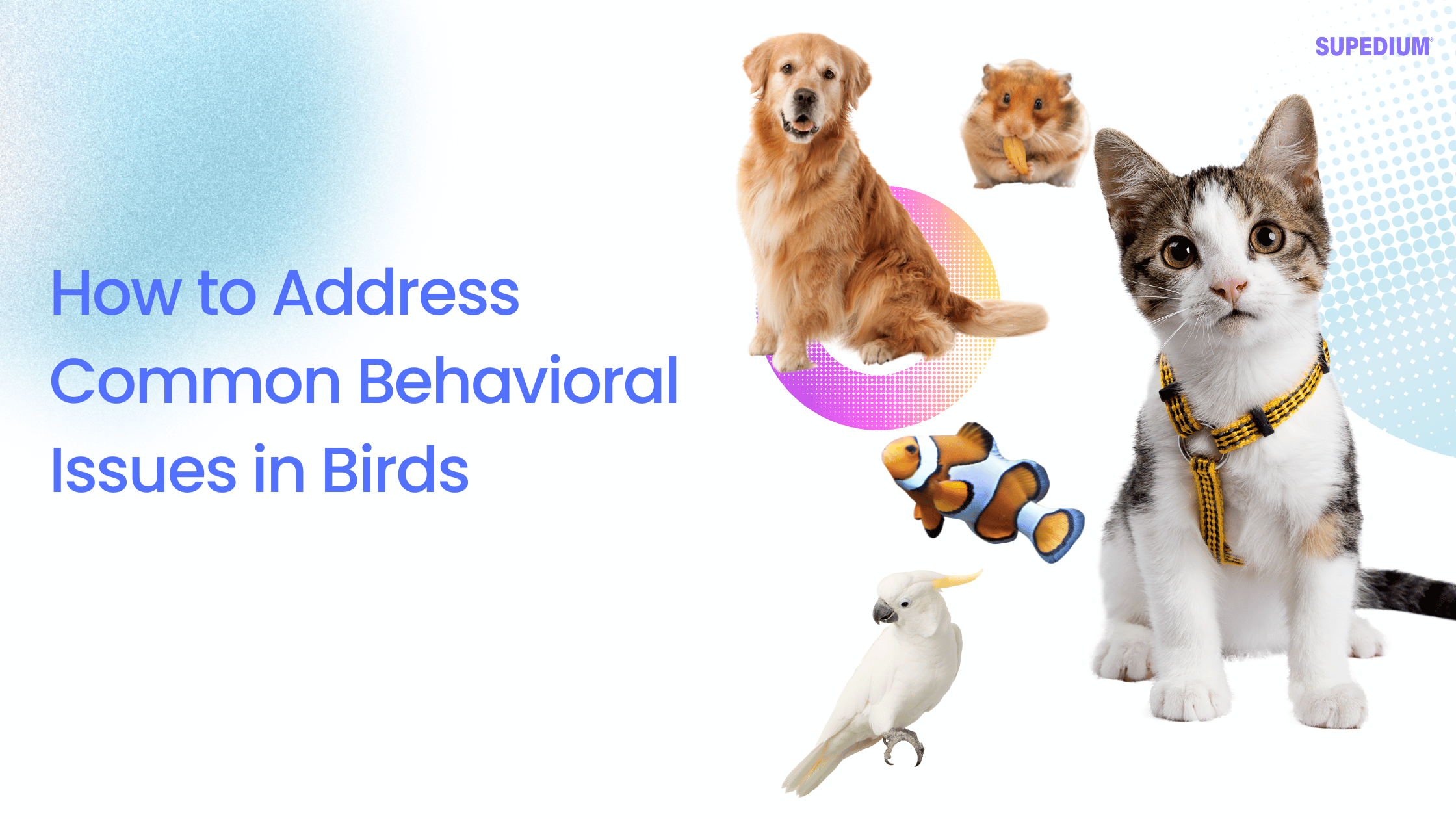Table of Contents
![]()
Birds are intelligent, social, and fascinating companions, but like all pets, they can develop behavioral issues. These problems may stem from environmental factors, lack of stimulation, or improper handling. Understanding and addressing these behaviors is essential for ensuring the well-being of your feathered friend.
Understanding Bird Behavior
To address behavioral issues effectively, you must first understand your bird’s natural instincts and tendencies.
- Behavioral Traits: Birds exhibit behaviors rooted in their species-specific needs, such as preening, vocalizing, and chewing. Recognizing these helps differentiate between normal and problematic behaviors.
- Body Language and Vocalizations: Observing subtle cues like puffed feathers, dilated pupils, or specific calls can provide insight into your bird’s emotional state.
- Normal vs. Problematic Behavior: Not all loud calls or occasional nips indicate a problem; they may be part of your bird’s natural communication style.
Common Behavioral Issues in Birds and How to Address Them
1. Feather Plucking
Feather plucking can signal stress, boredom, or underlying health issues.
- Causes: Common triggers include loneliness, insufficient mental stimulation, dietary deficiencies, or physical discomfort.
- Solutions:
- Provide toys and foraging activities to alleviate boredom.
- Ensure your bird’s diet is nutritionally complete.
- Consult a veterinarian to rule out medical conditions.
2. Aggression
Aggression can manifest as lunging, biting, or territorial behavior.
- Causes: Fear, hormonal changes, or stress can lead to aggression.
- Solutions:
- Avoid sudden movements or handling the bird when it’s upset.
- Gradually desensitize your bird to situations that trigger aggression.
- Provide a safe space where your bird feels secure.
3. Excessive Screaming
While some vocalization is normal, persistent screaming may indicate a problem.
- Causes: Birds may scream to seek attention, express boredom, or respond to environmental stress.
- Solutions:
- Ignore screaming while rewarding quiet behavior with treats or praise.
- Establish a routine to provide your bird with a sense of security.
- Offer enrichment toys to keep your bird entertained.
4. Biting
Biting is a common issue, especially in young or stressed birds.
- Causes: Fear, overstimulation, or lack of trust.
- Solutions:
- React calmly to bites, avoiding dramatic responses that reinforce the behavior.
- Build trust through gentle handling and positive reinforcement.
- Respect your bird’s boundaries and avoid forcing interaction.
5. Fearfulness
Fearfulness can limit a bird’s ability to interact with its environment or owners.
- Causes: Lack of socialization or traumatic experiences.
- Solutions:
- Introduce new environments or objects gradually, pairing them with positive experiences.
- Use treats or toys to create positive associations.
- Maintain a calm and patient approach to help your bird feel safe.
6. Chewing on Furniture or Cages
Chewing is natural for many birds but can become destructive if unmanaged.
- Causes: Boredom or an outlet for natural chewing instincts.
- Solutions:
- Provide bird-safe chew toys or branches.
- Supervise out-of-cage time to prevent damage.
- Include materials in the cage specifically for chewing, such as untreated wood.
Prevention and Training
Creating a Stimulating Environment
Birds need mental and physical enrichment to prevent boredom.
- Rotate toys regularly to maintain interest.
- Use foraging opportunities to encourage natural behaviors.
- Ensure the cage size and setup meet your bird’s specific needs.
Establishing a Routine
Consistency helps reduce anxiety and build trust.
- Feed your bird at the same times each day.
- Include regular play and sleep schedules.
Positive Reinforcement Training
Training helps shape desirable behaviors.
- Reward good behavior with treats, praise, or favorite toys.
- Use clicker training for clear communication.
- Avoid punishment, which can lead to fear or mistrust.
Socialization
Socialization fosters a well-adjusted and confident bird.
- Gradually expose your bird to new experiences and people.
- Balance social time with opportunities for independent play.
Addressing Underlying Health Issues
Behavioral issues may signal health problems.
- Regular Check-ups: Schedule routine visits to an avian vet to monitor your bird’s health.
- Identifying Physical Causes: Watch for signs of illness, such as changes in appetite or activity levels.
- Consulting Specialists: If issues persist, seek advice from an avian behaviorist or vet.
Building Trust and Bonding
Trust and a strong bond are crucial for addressing behavioral challenges.
- Interact with your bird consistently and patiently.
- Allow the bird to approach you on its terms.
- Use treats during training to reinforce positive interactions.
- Respect your bird’s comfort levels, avoiding forced interactions.
When to Seek Professional Help
If behavioral issues persist despite your efforts, professional help may be necessary.
- Persistent Problems: Contact an avian behaviorist or experienced trainer.
- Specialized Plans: Professionals can develop tailored solutions for specific challenges.
Conclusion
Addressing behavioral issues in birds requires understanding, patience, and consistent effort. By observing your bird’s behavior, creating an enriching environment, and using positive reinforcement, you can resolve many common problems. For persistent issues, professional guidance ensures your bird’s happiness and well-being, fostering a harmonious relationship for years to come.
Share This





Be the first to comment